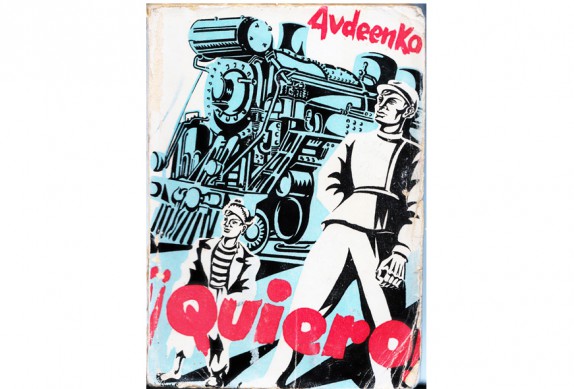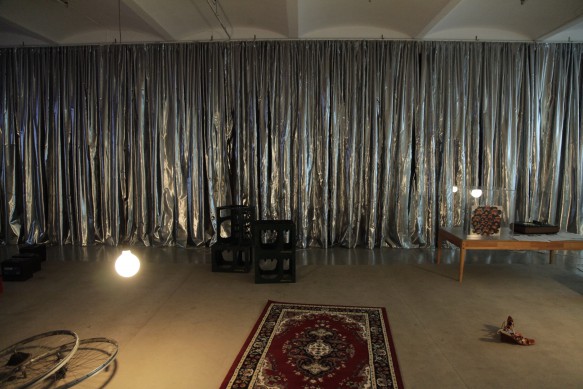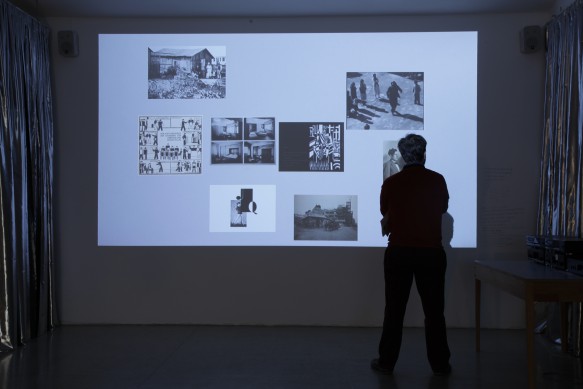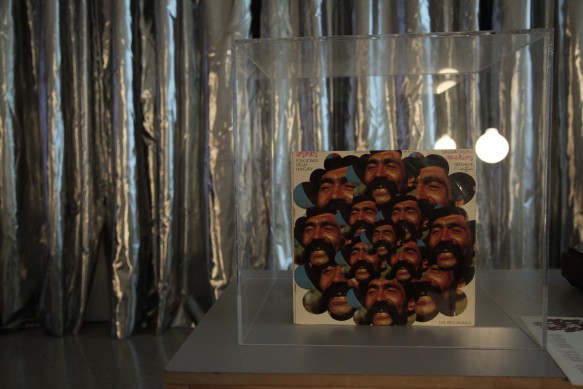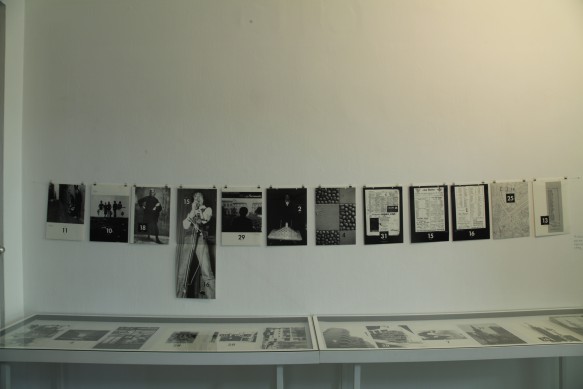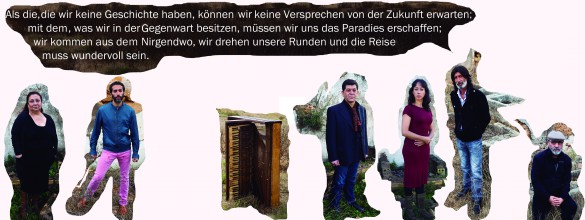Cuartos de Utopía
Pedro G. Romero and Máquina P.H.
15.10. - 21.10.2014
more
Flamenco people are a remainder rather than a multitude, and have hardly aspired to emancipation or any political project. And yet, there they are: on the one hand, they inspire many forms of life that are today considered utopian – nomadism, community, the right to idleness – and on the other hand, they contribute poiesis to the new forms of political imagination – playfulness, camouflage, resistant forms-of-life.
With the help of Ketani in Linz, we will present an archaeological inquiry into the so-called Gypsy Urbanism that inspired Otto Neurath in the urban transformations of Red Vienna in the 1920s. We will introduce a case study of the present political situation in Spain: the role of the flamenco imagination in the fight of the Corrala de Vecinas La Utopía [Utopia Women Residents Corrala[1]], involving activist artists like flo6x8 and Los Flamencos.
Alongside this, in the form of an open archive, the exhibition project outline Living Machines. Flamenco and Architecture in the Squatting and Evacuation of Spaces, curated with María García Ruis and Antonio Marín Márquez, will be presented at the Wittgenstein House, the current cultural headquarters of the Bulgarian Embassy in Vienna.
Pedro G. Romero / Máquina P.H.
with: María García Ruiz, Antonio Marín Márquez.
Marco de Ana, Javiera de la Fuente, Stefan Voglsinger.
Introducing: Tomás de Perrate & Amador Gabarri.
Ocaña, Charo Martín, Israel Galván, Rocío Márquez, La Esmeralda de Triana.
Pie Flamenca, LaFundició, 4Taxis, Los Flamencos, flo6x8, Ketani, Wein Klub (former Ost Klub), Zikkurat.
*The cuarto, back room, at the edge of the main room, outside of the most public space of a house or a café, is the place where flamenco keeps its alleged secrets. Cuarto, in Spanish, is also a measure of capacity, a quarter: we could understand it as a decrease, a reduction of utopia. Cuartear – to cut into pieces –, to cut up utopia, to fragment it, selling it in pieces, if we were to put it in the cocaine dealer’s jargon.
[1] Corrala is the Spanish term for a specific type of block of flats, built around a big interior courtyard from which hallways and staircases give access to the different flats.
Events
October 15, 7 pm
Spanish caravan… A trip to the origins of Gypsy Urbanism. Stefan Volgsinger (with María García Ruiz, Javiera de la Fuente, Marco de Ana and Pedro G. Romero)
October 16, 11 am
Yo vengo de Hungría (I come from Hungary), A trip to the origins of Gypsy Urbanism. María García Ruiz:presentation of case studies: Otto Neurath, Marie Reidemeister, Gerd Arntz, Helios Gómez, Peter Alma, Lazlo Moholy-Naghy, Hugo Ball, Emmy Hennings, Willy Röhmer, Milča
Mayerová, Erwin Schulhoff, Margarete Schütte-Lihotzky, August Sanders.
3 pm performance: Javiera de la Fuente. With the collaboration of Miguel Pérez. Mariana de las afueras.
5 pm performance: Marco de Ana. With the collaboration of Miguel Pérez and Rudolf Rostas.Farruca del extrarradio.
8 pm concert, Schwarzberg*: Miguel Pérez with Javiera de la Fuente & Marco de Ana. Sound Stefan Voglsinger.
October 17, 11 am
Los montes de Armenia (The hills of Armenia) A trip to the origins of Gypsy Urbanism, meeting with Roma Kulturzentrum Wien (Roma Cultural Centre of Vienna), Kulturverein Österreichischer Roma (Culture Society of Austrian Roma) and Ketani
12 noon distribution of the handmade illustrated edition of Giorgio Agamben’s Languages and Peoples among members of the Roma and Sinti communities.
10 pm concert, Zikkurat*: Spanish caravan. A trip to the origins of Gypsy Urbanism. Morenito de Triana & Band; Rudolf Rostas & Family; Nikola Zaric; Amir Kasra Zandian; Marco de Ana & Javiera de la Fuente;
Stefan Voglsinger; and various DJs on Romani Music.
October 18, 5 pm
Máquinas de habitar (Living Machines). Flamenco in the squatting and evacuation of spaces; presentation of case studies: Pedro G. Romero and María García Ruíz.
October 21, 11 am
Corrala de vecinas La Utopía (Utopia Women Residents Corrala). María García Ruiz: presentation of case studies: flo6x8, Belén Maya, Los Flamencos, Rocío Márquez, Juan Pinilla, Niño de Elche, Manuel Gerena, Santiago Cirujeda, FAAQ, Arquitectura y compromiso social, Tony Gatlif.
5 pm Tomás de Perrate & Amador Gabarri at Haus Wittgenstein; presentation of case studies: Diego del Gastor/ Darcy Lange; Karawane / Hugo Ball; Morphine / Emmy Hennings; Soleá de Casa Wittgenstein; Tangos de Lo Real; Seguiriyas en Casapuerta; Corrales por bulerías; with the collaboration of María García Ruiz
10 pm concert, Schwarzberg*: Tomás de Perrate & Amador Gabarri
*All the events will take place at Secession, Vienna, except the concerts indicated to be taking place at the Schwarzberg and Zikkurat.
Links
Kulturverein österreichischer Roma
Roma Kulturzentrum
Verein Ketani
Schwarzberg (*former Ost Klub), Schwarzenbergplatz 10/1, 1040 Wien
Zikkurat
Thanks to UNIA arte y pensamiento and alpha Cassio.
